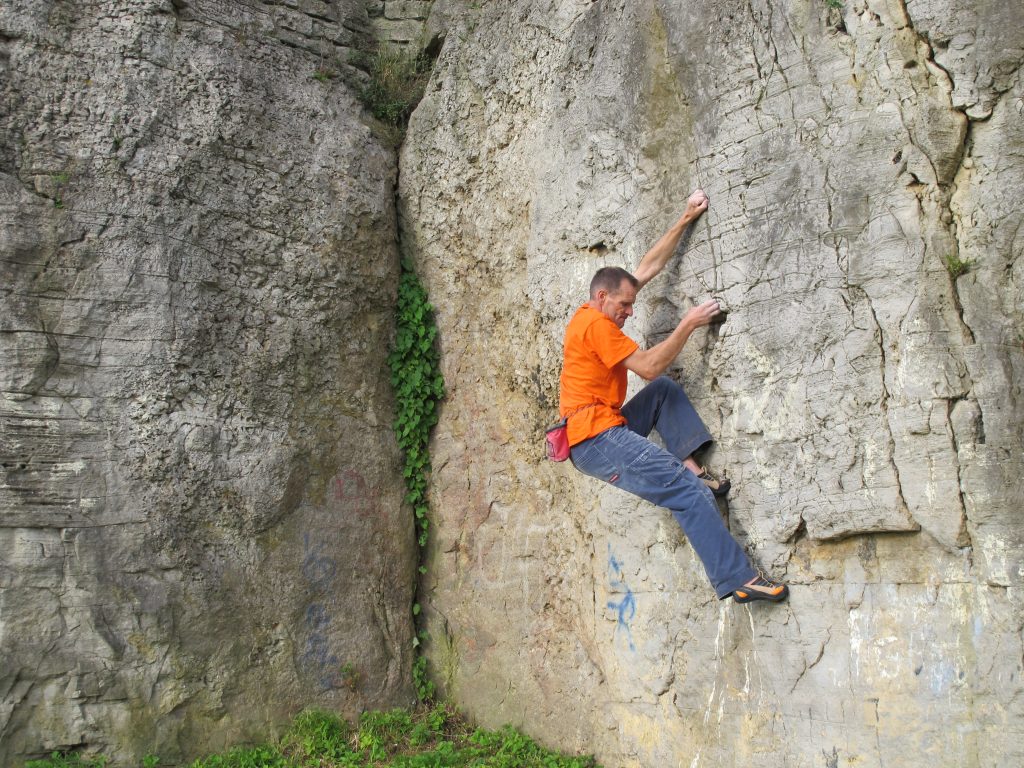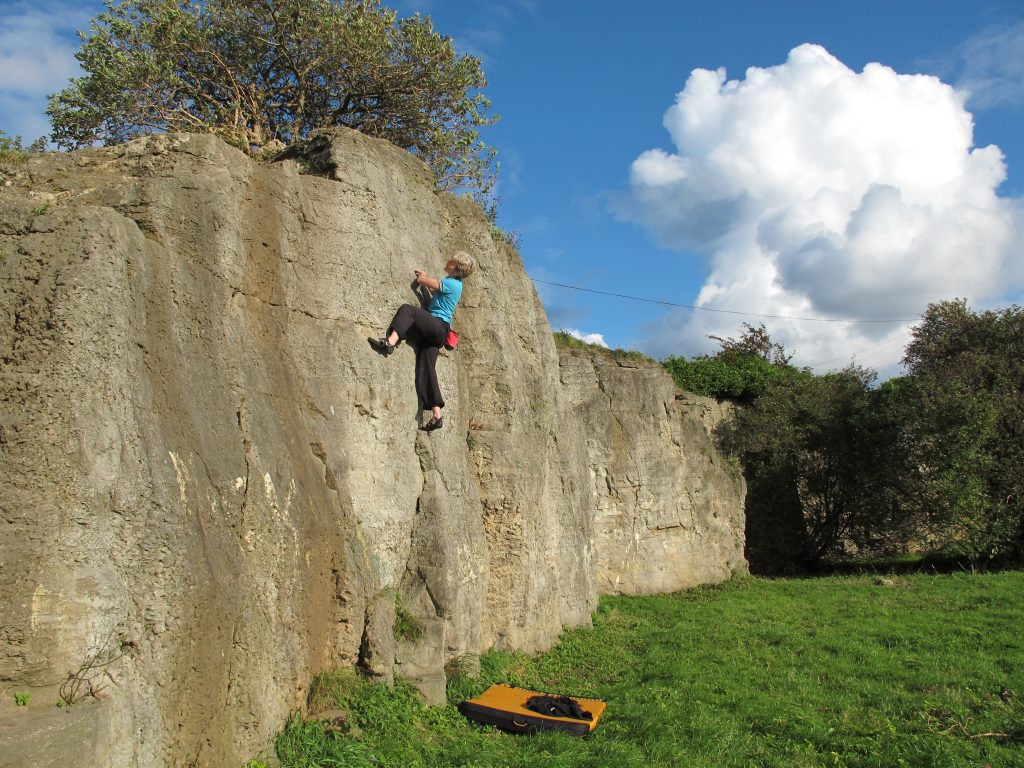
History
Mike Blenkinsop was the first to record his activities here back in 1974, including Left and Right Walls. Paul Stewart climbed Thin White Crack, The Dancer and the testing Naybrew. Paul Stewart was also involved in the development of the Black Wall with many problems including Improviserand The Rat. Many local climbers have used this compact venue for mid week training but few have “claimed” their achievements as first ascents.

Situation and Character
These pleasant, though small, crags are more akin to outdoor climbing walls than some of the major bouldering crags in this guide. The urban setting and southwestern aspect ensures popularity amongst local climbers however a long journey from far outside of South Tyneside can hardly be justified. The rock is Magnesium Limestone with many shell fossils clear to see. The quality of the rock is variable but all the problems described are on good quality limestone, however the more popular problems do suffer from a high polish. Quarry Crag is sheltered and can be climbed on all year round. The nearby Cleadon Crag (NZ392628) has a dozen short solos but unfortunately it is showning signs of neglect and has become more overgrown in recent years.

Access and Approaches
Quarry Crag is easily located as it overlooks the football fields adjacent to Quarry Lane in South Shields, on the edge of the Cleadon Hills. Park near the junction of Quarry Lane and Larch Avenue.

The Climbs
By far the best and most pleasant of the crags in the Cleadon Massif! The problems are short and generally polished. Many of the harder problems are eliminate in nature and obviously many more variations exist than are described here. Despite this Quarry Crag is a popular training area. There are two main buttresses, White Buttress and Black Wall. White Buttress is mostly used for up and down problems while Black Wall is most popular for its pumpy traverses. All the problems are about four metres high. While most climbers boulder here, there is a convenient fence along the top of the crag should a belay be required, however care should be taken not to let the rope run over the edge where irreparable damage has been caused to the soil, especially above White Wall. The climbs are described from left to right.

Mini Guide PDF

